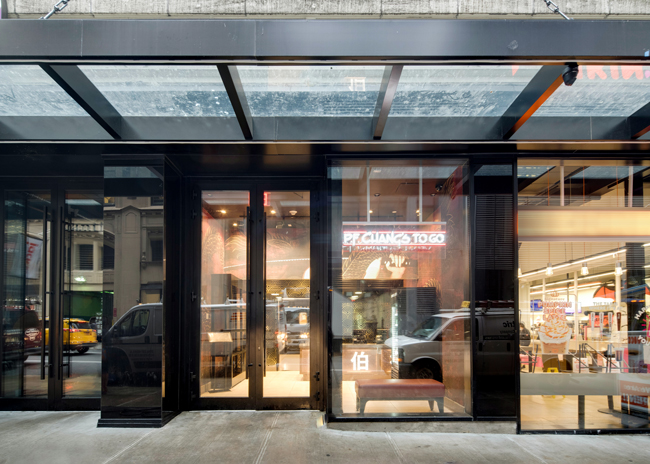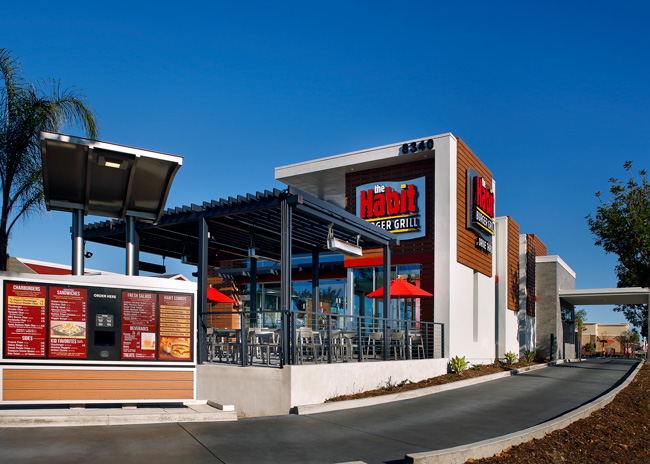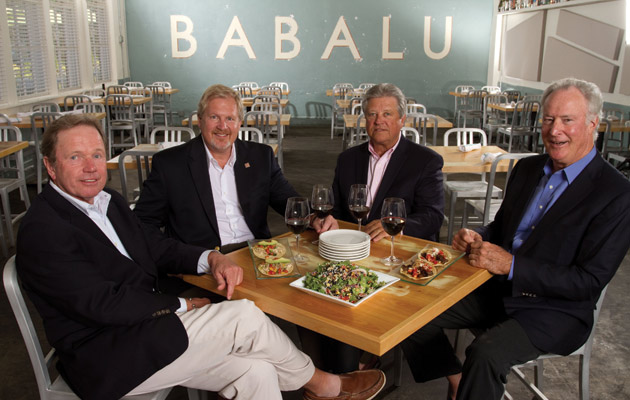The rate of new restaurant construction during and postrecession defies conventional wisdom. Logic would say that new building would slow down in hard economic times. According to Technomic, Inc., this turns out not to be true.
Digging into Bureau of Labor Statistics data for the past four years, Technomic executive vice president Bob Goldin found that 20,851 new restaurants have been built since 2008. The majority, 19,041, were independent operations/small chains while 1,747 were chain units. While there are no figures available for the number of remodeled and refreshed operations, Technomic believes them to be "a lot."
So, how do operators build new or rehab without breaking the bank? They dig deeper to find less costly alternative materials and come up with innovative money-saving ideas to get a bigger bang for fewer bucks. Here's a look at some smart money moves — some big, some small — recommended by operators and consultants who've made them work.
Brian Kendirck, Director of Development
Huddle House, Inc., Atlanta
Smart Moves: Cost out everything, use in-house expertise
Huddle House has more than 400 units in 20 states, mostly franchise operations. A new prototype design for new corporate and franchised stores also serves as the basis for the chain's current remodel initiative. The prototype includes a new signature feature, the six- to seven-seat Huddle Booth — a three-quarter round booth that fits into a corner with signage that says "Huddle in the House." It's designed for sports fans who want to gather before or after a game to celebrate or mourn their favorite team's performance and the walls around it are filled with sports memorabilia in shadow boxes. Rather than go with pro sports team memorabilia, restaurants can feature area teams with local memorabilia to keep costs down. Local teams are generally happy to donate items to be featured.
Such approaches support his mission to make the chain's new décor package cost effective for franchisees, a process Kendrick went through recently at another chain. There, an outside design firm had come up with what he says was an interesting but expensive plan for a new prototype and remodel initiative. Kendrick worked with in-house marketing and graphic design people to come up with less expensive alternatives to each element while keeping the design intact.
By costing out each piece in the proposal the in-house team was able to offer the package at a more reasonable cost, cutting the overall package cost by 30 percent. "We achieved the same look with different material and a less expensive fabrication method."
Glenn Mueller, President
RPM Pizza, Inc., Gulfport, Miss.
Smart Moves: Think outside the box, convert lighting, opt for durability
Glenn Mueller's RPM Pizza is the largest Domino's Pizza franchisee, with 135 stores in Mississippi, Louisiana and Alabama. In the business for 31 years, Mueller has seen a number of economic downturns and has responded creatively. His portfolio includes a combination of freestanding, inline and endcap units, so problems and solutions can be varied, he says.
One of the biggest problems he's faced followed Hurricane Katrina, which had such an impact on the building trades that construction on the Gulf Coast was extremely expensive and slow. How could he get new units he wanted to build in Pascagoula and New Orleans built economically?
His solution was to have panelized construction completed outside of the area and shipped in to the selected locations. Exterior wall panels, trusses and roof decking were all fabricated in a factory out of state and shipped to the site. The panels were lifted in place with a crane and bolted together. In just two days and at a reasonable cost, the building shell was weathered in. Mueller says, "Panelized construction is about the same cost as stick-built in a normal market but it is a way to mitigate cost in expensive construction markets."
Mueller is now a proponent of this modular approach. "The buildings are inexpensive since they are built in a factory and hauled to the site on a truck. They can be open in three weeks from the time they are put on the site," he explains. "They work well for a test store or a store in a new, small-town market. The modular buildings mostly afford cost savings with multiple copies of the same building because of assembly-line efficiencies. A main advantage is that we can start building even before a location is selected."
He also catalogs other ways to save money and "go green" while sprucing up a store. For example, he replaced all old T-12 fluorescent lights in all stores with T-8s. Installing the lighting gave them a three-year payback, with a return on investment of more than 35 percent. He notes that some states, municipalities or power companies offer incentives for updating to the new energy-efficient lighting but adds that, even without incentives, the payback is fast. He obtains discounts by buying in quantity and by contracting for a large number of stores with the installation service.
Mueller rejuvenated old ceilings by installing clip-on grid covers and new tiles. During this rehab, he replaces any rusted metal AC diffusers and return air grilles with plastic ones. The ceilings look like new, he reports, and the process is much less expensive than replacing the entire thing. In fact, it costs one-third of ceiling replacement, saving thousands of dollars depending on the size of the building.
In some cases, the initial cost of an upgrade might be more expensive but will save money in the long term. An example of this is the replacement of quarry tile or vinyl baseboards with aluminum baseboards. Quarry tile or vinyl baseboards are easily damaged while aluminum is very durable, Mueller says. Buying the more expensive but better alternative will eliminate the need to replace baseboards for the life of the building.
Steven Magnus, Owner's Rep
Iron Bridge Consulting Worldwide, New York, N.Y.
Smart Moves: Work closely with the GC, look for bargain solutions to high-end design ideas
Working as an owner's rep for several high-profile restaurant clients, Steven Magnus recommends working with a general contractor that will "listen, work within goals and budget, and not be change-order happy." During his career, Magnus has either worked in-house or as a consultant for 138 restaurants, including TGI Fridays and Walt Disney World. Among his current clients are Sushi Samba and restaurateurs David Burke and Charlie Palmer.
From the beginning, Magnus works closely with a GC on every area, from HVAC to interior design, in order to control costs. In one situation he was able to save an additional $40,000 in construction costs by positioning a dining room doorway differently than originally designed. "The dining room was on an upper level and we wanted the doorway frame to provide optimal flow in and out. The architect wanted it flush to the wall but that would have meant deep structural work. We were able to place it out a few inches with the existing header beam, so we saved a lot of extra expense," he explains.
Magnus also recommends always seeking out lower cost alternatives to great, high-end design ideas. As an example, he describes a solution in the new construction of a restaurant in Washington, D.C. The restaurant, which is called Boqueria and has a Spanish tapas theme, has two sister locations in New York. In the D.C. location, the architect had specified blackened steel metal finishes for design elements. Blackened steel is created by an expensive chemical process performed on raw steel. To cut costs, the general contractor on the job recommended using a metal-darkening solution that was applied on site and covered with a clear coat for protection. This process saved the restaurant $7,000.
Linda Duke, President
Duke Marketing, San Rafael, Calif.
Smart Move: Rethink interior artwork
Eighty-six-unit Straw Hat Pizza, for whom Duke Marketing does branding, design and marketing work, has been in California since 1959. Slightly more than 50 years later, the chain was getting ready to locate outside of the state and the concept needed a makeover.
The traditional Straw Hat units had salad bars with nearby walls decorated sparsely with framed art and photos. This artwork ran $3,500 per unit to frame and mount. As part of the chain's new look, the framed photos were tossed out in favor of dramatic new wall murals that show beautiful fields of produce, emphasizing the freshness of the ingredients available not only at the salad bar but as pizza toppings. The murals incorporate legends that educate diners about the menu ingredients and reinforce the brand.
The "brand wall" and "salad wall" murals come at a cost of $1,800, almost half the cost of the prior wall art. All new locations have the murals and existing franchisees can order the design to be installed in their units as part of the chain's brand reimaging initiative.



